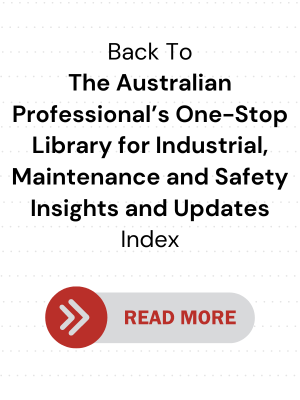Choosing Between Belt and Chain Drives

.png)
In this article, we answer these questions:
- Belts vs chains – which is better?
- Can belts replace chains in a drive system?
- What are your options when converting chains to belts?
Important: Please note that there are sources that seem to contradict the information we have compiled here, so please keep in mind that it highly depends on the context of their specific circumstances. For example, some might say chains are more efficient than belts, and that is true for heavy-load applications and systems where belts are just plain impractical to use, as they are not designed for that. Then, there’s the distance between the shafts, and so on.
We kept the scope of this article to practical information for simplicity.
Belts vs chains – which is better?
If you are in the market for a new drive system and are choosing between belts and chains, then you should consider the following important factors:
In favour of belts:
- Maintenance: Belts are generally easier to maintain and replace when compared to chains. They don't need lubrication, which can be a significant advantage in some applications. Most chains, on the other hand, need periodic greasing or oiling.
- Noise and vibration: Belts tend to produce less noise and vibration, making them a good choice for applications where quiet and smooth operation is preferred.
- Non-parallel shafts: You can only use belts for setups that involve two or more non-parallel shafts. Chains just can’t do this.
- Oil and grease-free: Belts don't produce oil or grease mist, which means they can help keep the surrounding area cleaner, making them a good choice for applications where cleanliness and safety is essential. This also reduces the risk of fire and injury due to slippery surfaces.
- Operational speed: Belts are designed to run faster than chain drives, so you may prefer them when throughput is important to you.
- Space constraints: Belts can be advantageous in situations where space is limited, as they are more flexible in terms of layout and can be used in smaller spaces.
- Total cost of ownership: Belts are often more cost-effective compared to chains. They are typically less expensive to purchase, install and maintain than chains.
In favor of chains:
- Load capacity: Belts are suitable for systems with low to moderate load, but stick to chains for heavy-duty applications, because of their higher load bearing and torque capacity, unless you’re using something like the Gates PolyChain series.
- Operating conditions: Belts can be more susceptible to environmental factors such as dirt, dust, humidity/moisture and temperature variations. Chains may be a better choice in such conditions, but keep in mind that they can rust.
- Tension and alignment: These are critical for belt-driven systems, and failure to keep this in check can lead to decreased efficiency, premature wear and slippage. On the other hand, chains are more forgiving in this regard.
Neutral – a tie for both:
- Availability: Belts are typically easier to source than chains. You can even extend their shelf life provided you store and handle them properly, so you have one less thing to worry about come unexpected downtime when they snap. On the other hand, chains have longer shelf life than belts, so you could keep your own spares more easily.
- Distance between shafts: Belts can handle long centre distances, while chains are best used for small to medium centre distances.
- Efficiency: Belts ‘flex’, but chains ‘stretch’, so expectedly there will be some power loss in either system. While belts are somewhat less efficient than chains in this regard, the difference isn’t really that significant.
- Longevity: Properly maintained belts can last as long as chains. Either translates into cost savings over time.
- Precision and timing: Chains can run in near-perfect synchronization, but so can timing (synchronous) belts.
- Slippage: Belt drive systems are naturally installed and maintained to operate under ‘near perfect’ alignment conditions. However, belts will more likely still slip in oily or wet conditions regardless. Chains are just inherently much less prone to slippage.
- Weight: Belt drive systems are generally lighter than chain-driven ones, but that’s only because they’re expected to carry less load.
Can belts replace chains in a drive system?
Yes, belts can be used to replace chains in a drive system, but the feasibility of this setup depends on various factors and the specifics of your intended application.
Consider that:
- You can’t just use any industrial belt: You'll have to go with belts that are designed specifically to replace chains, such as the Gates PolyChain series.
- You need to change other components: For example, the PolyChain belts must be used with a dedicated Gates PolyChain GT sprocket specifically designed to run them.
- You may have compatibility issues with the rest of the system: Not all drive systems are designed to use belts. For example, some have too much misalignment or vibration to operate properly and safely using belts that you’d have to stick to chains.
- You must get the specs right: Improper sizing (length, width and number and type of teeth), belt material, installation, alignment and tensioning of belts may lead to slippage, premature failure and undesirable -- and sometimes harmful -- results. When using synchronous belts, mind the proper timing as well.
Reminder: It is always advisable to check with technical data to see whether the changeover will be successful. If in doubt, reach out to us and we’ll see how best to help you.
What are your options when converting chains to belts?
One of the brands you can consider is the Gates Poly Chain series.
Poly Chain® GT™ Carbon™ belts are ideally suited to replace roller chain drives:
Features:
- Carbon fibre tensile cord for optimum power transmission capacity
- Long flex fatigue life
- Can withstand shocks, surge loading and heavy abrasion
- Available in extremely long variants of up to 20,000 mm
- Custom belt lengths also available
- Up to 97% lighter than roller chains
- Up to 3 times longer belt life
- Up to 10 times longer sprocket life
- No slack, just smooth starts and stops
- No stretch
- No rust
- No oil
- Inert to most chemicals, hence ideal for washdown environments
Benefits:
- Maintenance-free alternative to chains (no lubrication and re-tensioning needed)
- More cost and time savings
- Lasts up to three times longer than roller chains
- Reduced downtime
- Reduced environmental contamination caused by chain lubrication
- Reduced risk of fire and injury
- Safe for food processing
- Quiet operation
Poly Chain GT sprockets as designed to run Poly Chain® GT™ Carbon™ belts and offer the following unique features and advantages:
- Full split in bushing allows easy installation and removal
- Precise sprocket design produces positive, press fit to shaft
- Smaller, narrower sprockets save shaft space, keep the load closer to bearing and extend life of reducer
- Keep overhung load below manufacturers recommendation
- Sprockets are precision manufactured and static balanced
AIMS' Note on Safe Use of Belt-Driven Systems
- Power down: Before any inspection, maintenance, or adjustment, make sure to completely shut down the power to the machine and apply a lockout/tagout (LOTO) device to prevent accidental restarts.
- Right belt for the system: Keep in mind that v-belts (especially cogged / notched / wrapped belts) are different from synchronous /timing / ‘toothed’ belts. Some mistake the cogs for teeth but remember that cogged belts run on V-shaped pulleys that do not have teeth. Are you operating where flammable substances are present? Maybe you need fire-resistant anti-static (FRAS) belts – or maybe heat-resistant and oil-resistant belts will do. We compared them in this FAQ.
- Safe attire: Avoid loose clothing, jewelry and long hair that could get caught in the moving parts. Ensure proper fit of workwear without compromising comfort, dexterity and protection. Tie back long hair and secure loose items.
- Safeguards in place: Never operate a belt-driven system with the guards removed or bypassed. These guards are there for your protection.
- Maintenance and replacement: Regularly inspect belts and pulleys for wear and tear. Maintain proper belt tension and alignment as specified by the manufacturer. When replacing the belt, make sure you get the proper fit and measurement of the system. These accessories and maintenance kits (eg alignment tools, belt measurers, pulley gauge sets, spacers, tensioners etc) come in handy.
- Cleanliness: Keep the area around belt drives free of debris and clutter that could get caught or cause a fire hazard.
(Refer to our content library's sub-index of articles about belt-driven systems and electric motors for more information.)



